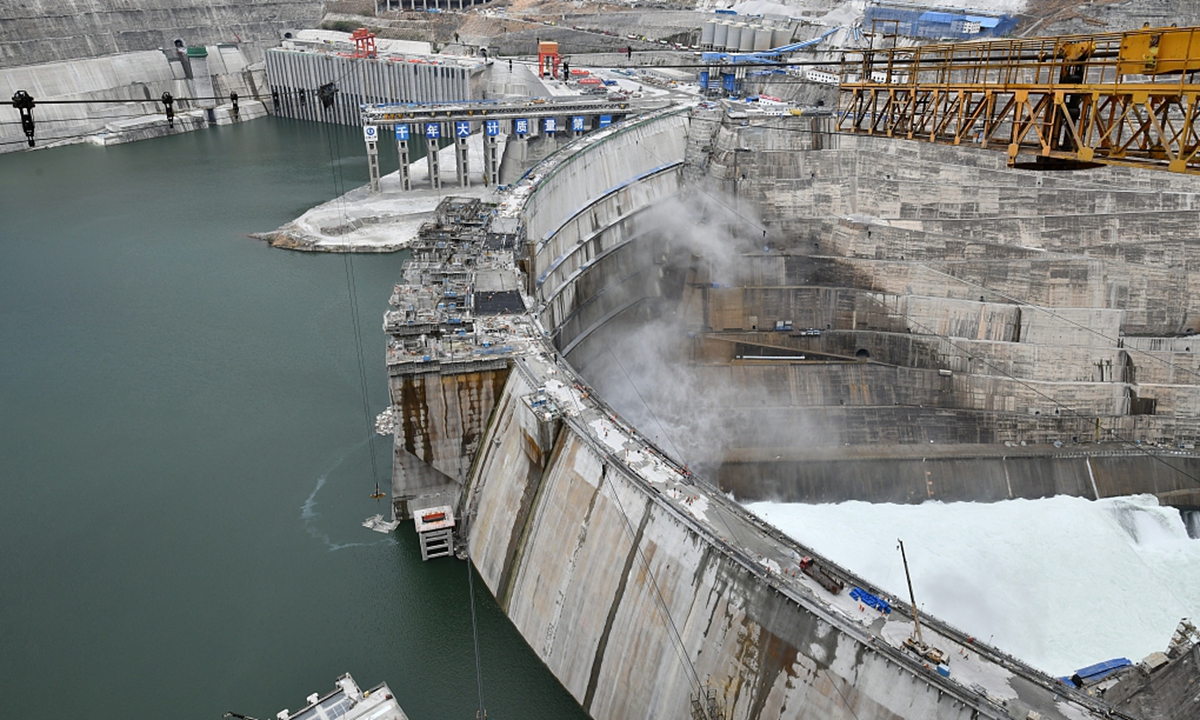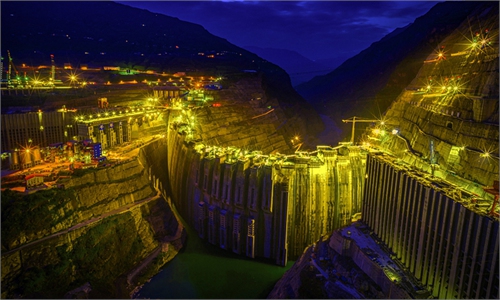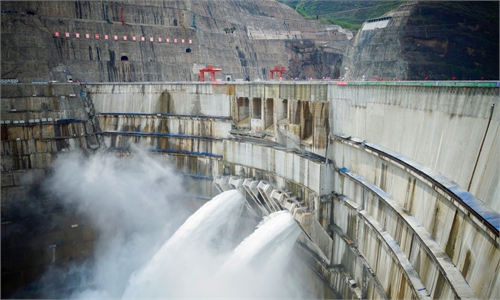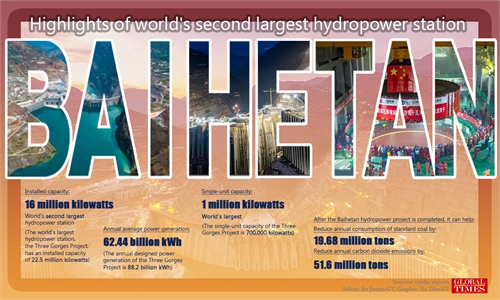
The photo taken on May 28, 2021 shows the Baihetan Hydropower Station in Southwest China's Yunnan Province. Photo: CFP
The Baihetan Hydropower Station in Southwest China launched operation of its first two generating units on Monday. The project broke a series of world records, including the largest underground caverns, the largest anti-seismic parameters of a 300-meter high dam, and the largest spillway caverns.
The Baihetan hydropower plant marks another milestone in China's infrastructure construction, which has continued to set new records in recent years, receiving attention and interest from the rest of the world.
There has been no short of groundbreaking infrastructure projects in China over the past decades, from the Qinghai-Tibet Railway, the world's highest and longest railway built on the Qinghai-Tibet Plateau, to the Three Gorges project, the world's largest hydropower project, to the Hong Kong-Zhuhai-Macao Bridge, the world's longest sea bridge, which all reflect China's strength when it comes to building infrastructure.
Thanks to the impressive infrastructure development, the Chinese economy has experienced a period of unprecedentedly rapid growth. China's GDP, which exceeded 100 trillion yuan ($15.5 trillion) for the first time in 2020, grew by 189 times over the past 70 years since the founding of the People's Republic of China.
However, many in the West always have such views that China's economic growth model, partly driven by infrastructure investment, is flawed or unsustainable.
Yet, the reason why the Chinese economy keep producing miracles is precisely because it has taken a path that suits its own national conditions, rather than blindly following the Western theory. China's progress in developing infrastructure has played an important role in stimulating regional economy and promoting high-quality development across the country.
For most Western countries, while the economic boost of infrastructure investment is well understood, their governments are often less motivated to making large-scale investment in this area due to various difficulties and obstacles. Even for the US, a massive infrastructure program is no easy piece.
Last week, US President Joe Biden reached a compromise over a $1.2 trillion infrastructure plan with a group of bipartisan senators. The scale of investment shrank considerably from the original price tag for the grand plan, underscoring uncertainties in fundraising and implementation.
To a certain extent, the challenges which is leading to uncertainty as to whether the infrastructure plan could pull the US economy out of its current mire is a microcosm of the West's ambivalent attitude toward investing big in infrastructure projects.
These developments highlight the differences between Chinese and the Western model when it comes to infrastructure. In fact, there is no need to compare one with another as China's infrastructure achievements are based on its own economic uniqueness. In the past, China pushed forward with its own infrastructure construction based on its own national conditions, and the future will be no exception. Such growth momentum needs more understanding and recognition from the rest of the world.



